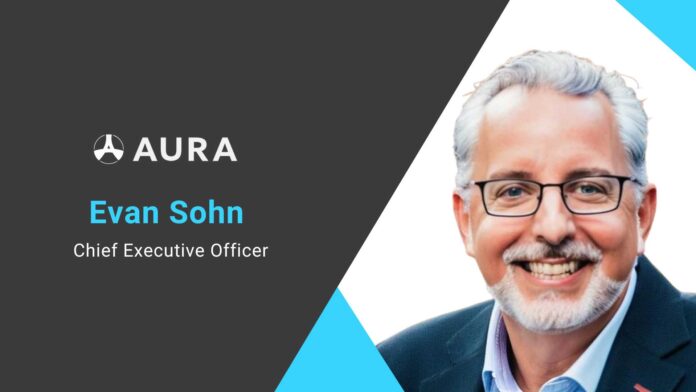- How did you collect and analyze the vast dataset of 20 million company profiles, and how does this differ from traditional workforce surveys?
I’m extremely proud of the team here at Aura, and how they’ve committed themselves to building a new category of business intelligence. And with that commitment, came the challenge to absorb and analyze an enormous world of data on company workforces.
Our approach to this problem is relatively simple: We gather data from a variety of public sources, including online professional profiles, job boards, social media, employee satisfaction review sites, and more.
The real magic happens in the next step: Our advanced AI models process this unstructured data, turning it into a workable, organized database that anyone (even non-technical, non-data professionals) can access and understand. The end result is a platform that is used, trusted, and loved by thousands of management consultants, financial professionals, and competitive intelligence professionals for countless business cases.
This approach is unlike so many other traditional surveys, which either scrape data on an as-needed basis (providing unstructured, ad-hoc data) or use inaccurate methods to “guesstimate” workforce metrics.
- Why is it important for executives and HR leaders to rely on real-time workforce behavior data instead of opinion-based surveys?
We’ve found time and time again, workforce data is an extremely strong indicator of future trends. It’s important not just to monitor your internal team’s productivity and feelings, but also benchmark and compare against competitors as well. That’s where outside-in workforce intelligence like what we provide at Aura can play a huge role in gaining a competitive advantage.
- The report notes a decline in leadership trust in sectors facing layoffs, compliance issues, or abrupt RTO mandates. What best practices can organizations adopt to maintain or rebuild trust during these transitions?
Our 2024 Workforce Industry Benchmarking Report shows that leadership trust is often the first casualty during layoffs, compliance crises, or abrupt RTO mandates. Once lost, it’s far harder to rebuild than to protect. The organizations that maintain trust communicate early and with context, involve employees in shaping changes, keep leaders visible and accountable, and ensure actions match stated values. Just as importantly, they measure sentiment continuously, so they can address concerns before disengagement sets in. In moments of high stakes, transparency and alignment serve as the foundation of a healthy, flexible workforce.
- Burnout evolving into silent disengagement is a striking insight. How can leaders detect and address disengagement before it becomes a long-term productivity drain?
Burnout and disengagement are areas where, once again, an ounce of prevention can beat a pound of cure. Taking in feedback from employees at all levels to better understand and alleviate tension before it happens is a must for leaders in 2025. Especially with AI causing more uncertainty than ever, workers need to feel trust in leadership to stay engaged, mentally and emotionally.
- The plateau in DEI sentiment is notable, especially given its earlier surge. What are some underlying causes of this stagnation, and how should companies address “DEI fatigue”?
Our 2024 Workforce Industry Benchmarking Report shows DEI sentiment plateauing after its earlier surge, driven partly by ‘DEI fatigue.’ This is largely caused by teams overpromising, underdelivering, and treating diversity efforts as side initiatives rather than embedded strategy. When economic pressures, layoffs, or abrupt policy shifts like RTO mandates hit, DEI often slips down the priority list, eroding trust. The companies that maintain momentum are those that integrate DEI into business performance goals, measure sentiment in real time, and hold leaders accountable.
- If there’s one metric you believe all CEOs should track in real time going forward, what would it be and why?
At Aura, one visualization we’ve seen play a key role in so many analyses is the movement of talent from company to company. Understanding the top sources of talent entering your company, as well as the top destinations when talent leaves, is a huge pillar in optimizing your workforce.
If a company’s most important resource is their people, then smart leaders should understand the arc of their careers and what drives them to join or leave their organization.
About Evan SohnEvan Sohn has served various executive roles leading and growing B2B tech companies. Evan currently serves as the Chief Executive Officer of Aura Intelligence, a talent analytics platform. He is also a Venture Leader at Bain’s Founder’s Studio. Before joining Bain, Evan was the Chairman of the Board and later the Chief Executive Officer of Recruiter.com, a hiring platform that utilizes virtual teams and AI job-matching technology. He also worked as a Sales Advisor at Firemane and an Advisor at Fundomate. Evan’s earlier roles include serving as Vice President at the Sohn Conference Foundation, a non-profit organization dedicated to the treatment and cure of pediatric cancer. He was also a Partner at CrowdSelling, a real-time hard goods exchange, and Vice President of Sales at Veea Inc., a platform for edge computing and communications. Additionally, Evan has experience as an Advisor at Better Mobile Security, a cybersecurity company, and as the Vice President of Sales for North America Financial Services at Poynt by GoDaddy, a smart terminal offerings firm. Evan obtained a Bachelor of Science degree in information systems and management from NYU Stern School of Business. |
About AuraAura Intelligence was started in Bain & Company, one of the world’s most respected and influential management consulting firms. What started as a simple task, to collect workforce data for clients, grew into a vision for a new category of intelligence for consulting firms, private equity firms, hedge funds, and enterprises. Aura spun out as a standalone company in 2024, quickly signing many of the world’s top Fortune 500 companies and international firms. Today Aura is building the world’s first and only autonomous AI agent, making hundreds of hours of data collection and analysis on workforces around the globe available in just minutes. |
Stay ahead of the curve. Subscribe to HRTechEdge for your competitive edge.






